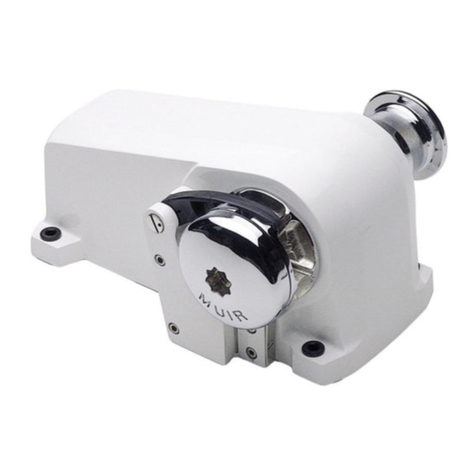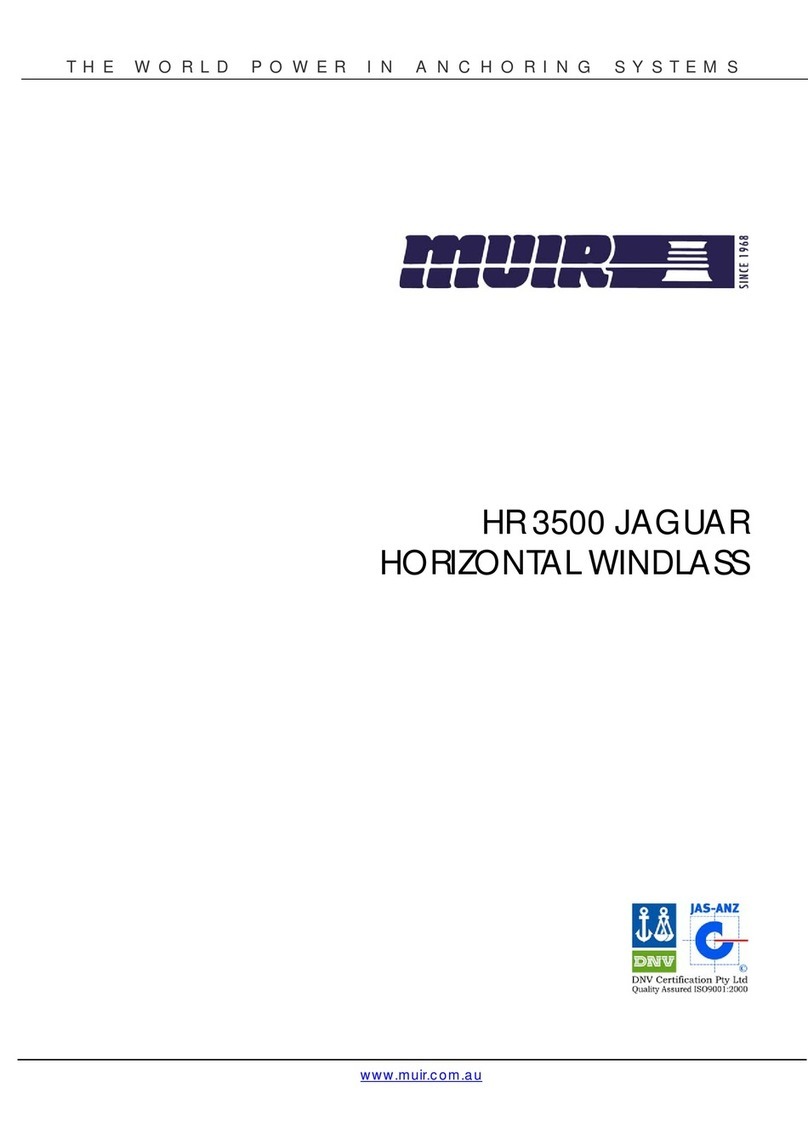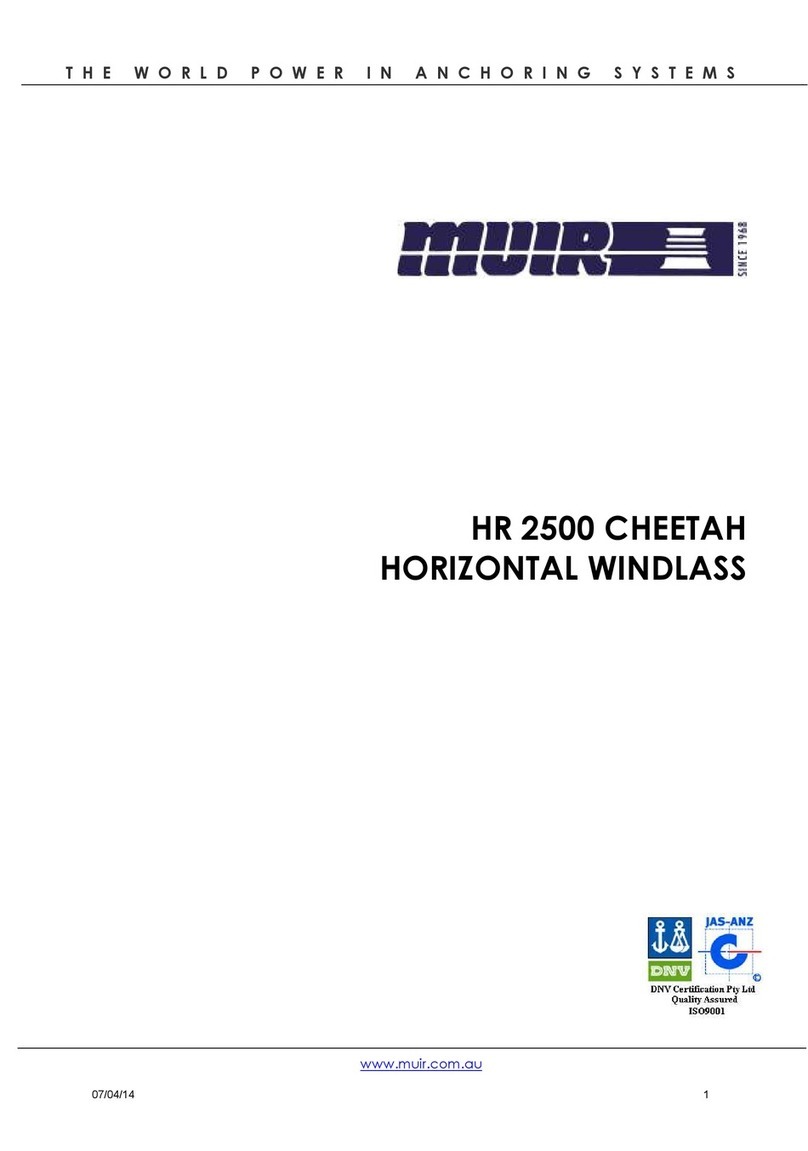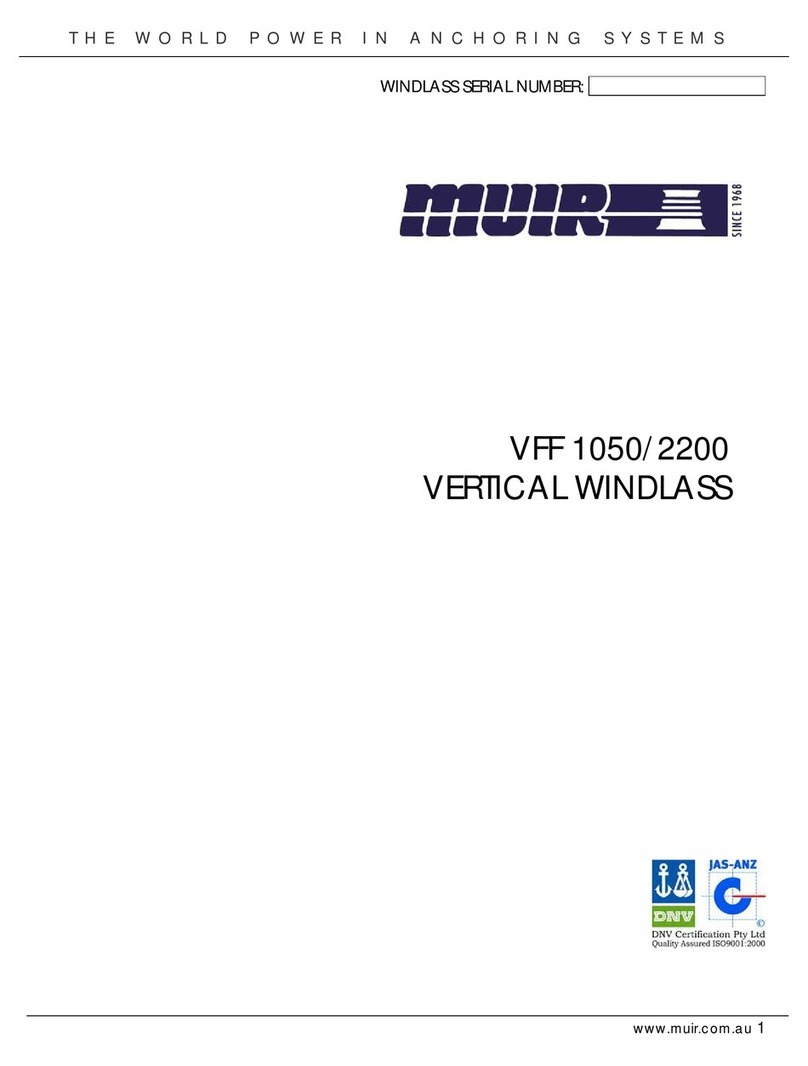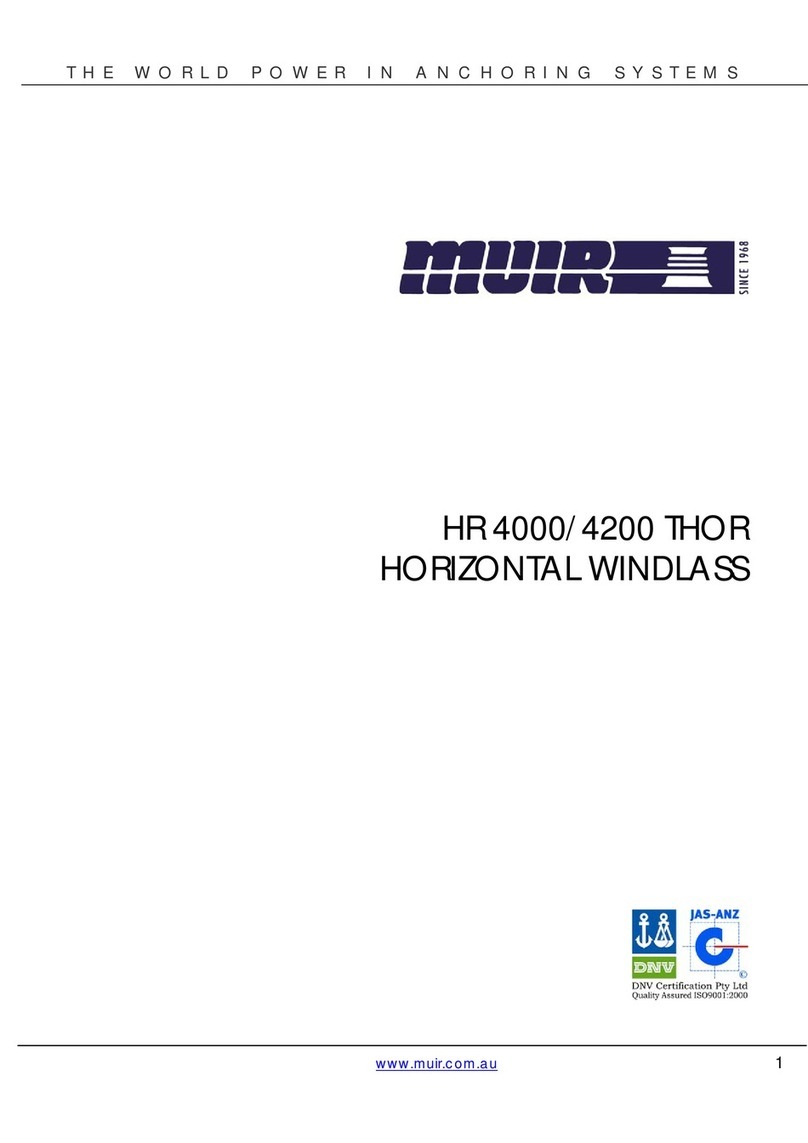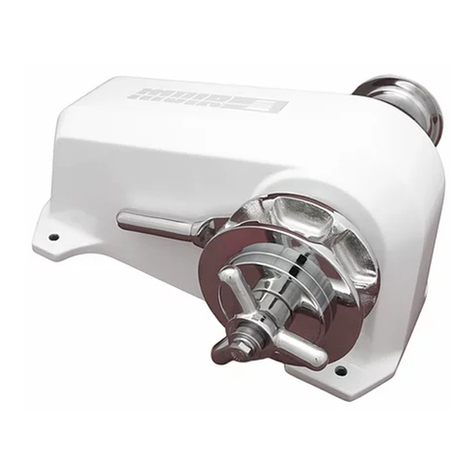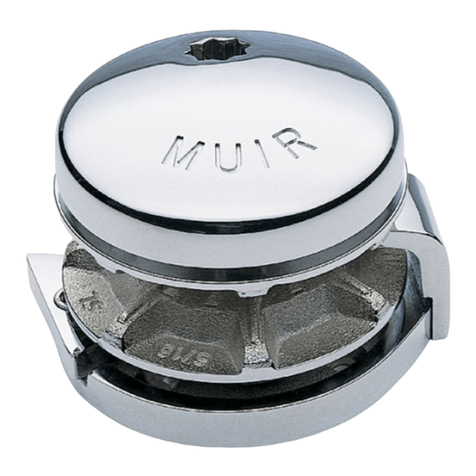
T H E W O R L D P O W E R I N A N C H O R I N G S Y S T E M S
HFF600S MANUAL WWW.MUIR.COM.AU Page: 5
INSTALLATION
fig i
fig ii
fig iii fig iv
figvfig V
fig Vi
1
2
Figure(l) Locate the windlass centrally fore and aft. Check
that the chain leads unhindered to the anchor roller. The
chain leads onto the starboard side of the gypsy, wraps
around 180° and falls below deck through the chain pipe
(hawser). Ensure there is sufficient room around the windlass
to allow full rotation of the windlass manual/clutch handle (if
supplied).
Figure (ii) The centre height of the gypsy must be in the same
plane as the chain lead from the bow roller. If the deck is
angled (fore & aft) or curved (port to starboard) a suitably
shaped mounting block will be required to spread the load
evenly over the deck surface and mount the windlass base
on a level and even footing.
Figure (iii) Place the shaped mounting block (if required)
onto the deck. Using the layout template supplied, mark the
mounting centres and drill the holes, (Refer template).
Figure (iv) Apply an appropriate sealant to the base plate
and mounting block (if required) and carefully tighten the
nuts & washers onto the threaded studs under the deck.
Remove excess sealer.
For Aluminium or Steel hull vessels, it is important to insulate
the windlass with a non-conductive gasket to avoid
corrosion. This also applies below deck with the mounting
bolts, nuts and washers.
Where the deck construction is light or of foam sandwich
construction, a plywood stiffener of at least 16mm (5/8")
should be fitted to the underside of the deck to spread the
load and to prevent the bolts from pulling through the deck.
Large diameter washers on the underside of the stiffener
assists to spread the load.
Figure (v)
1. Mount the windlass from above as shown.
2. From below, place washers and nut on each stud and
tighten.
Figure (vi)
3. Locate adaptor and align holes.
4. Fasten using cap screws provided.
Figure (vii)
5. Grease shaft and key, slide geardrive onto shaft ensuring key is aligned. Rotate gearbox to
prefered mounting position and secure with bolts provided.
6. Locate gearbox and bolt through adaptor.
7. Place washers and bolt in the end of the shaft and tighten / Fit circlip.
NOTE:
On assembly, grease all moving parts with a Lithium / Teflon based grease.






